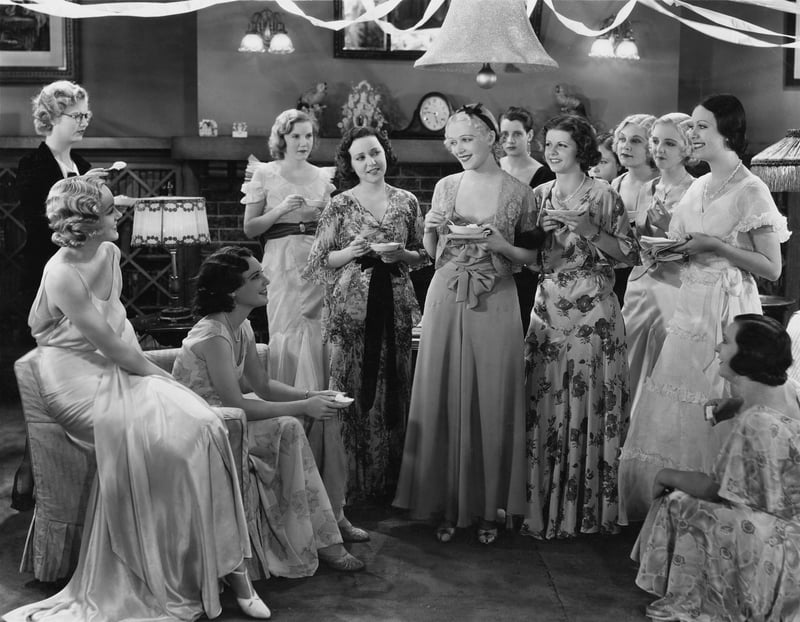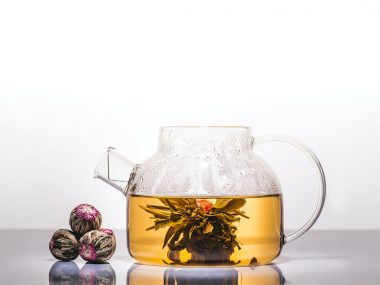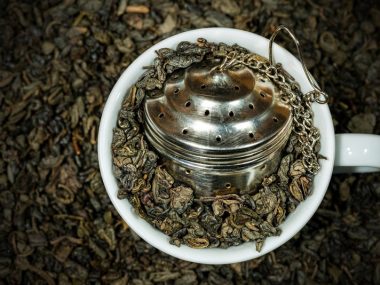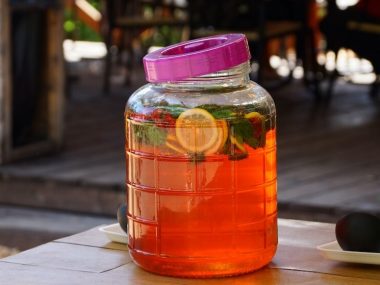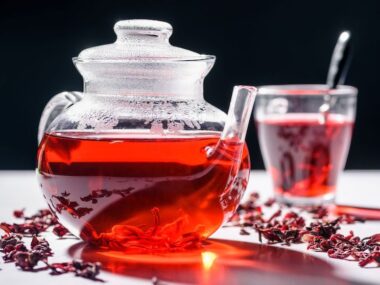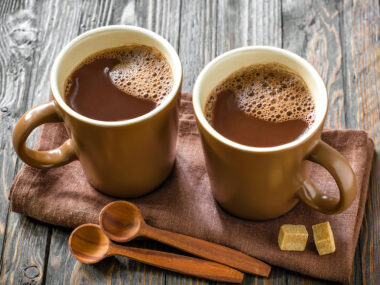Have you ever found yourself drawn towards something that you either have a disdain for or think you won’t enjoy? Dip your toe in this water rather than dive in, and you’ll find yourself quickly swimming with the rest!
Table of Contents
What Is A Good Tea For Non Tea Drinkers?
If you are a non-tea drinker, we have some true teas and tisanes (herbal teas) that might tickle your fancy. We have a tasty tea for just about anyone!
Please note that although we have some fantastic teas listed here, we don’t recommend or advise consuming them if you have a medical condition or are taking medications. Tea may worsen an existing condition, cause adverse reactions, or interact with certain medications. Your healthcare provider can help you decide whether a tea is safe for you to consume.
So, what tea should I try first? As you can see, there are a lot of choices. The worst thing a non-tea drinker can do when trying their first tea is select a tea that the palette won’t care for. As a guide, look for a tea with the characteristic tastes you like. For example, if you like fruity-tasting things, try a fruity tea. If that minty flavor in gum and toothpaste is your go-to taste, try a minty tea.
Lastly, if you are a “timid taster” who dips your toe in the water to gauge whether or not you are going to “jump in,” you are most likely wondering, “What is the mildest tea to try first?” We have that covered!
Floral Tea
- Tieguanyin (oolong tea)
- Jasmine (green tea)
- Rose (tisane)
- Lavender (tisane)
Nutty Tea
Smoky Tea
- Hojicha Latte (green tea)
- Lapsang Souchong (green tea)
Robust Tea
Fruity Tea
- Silver Needle (white tea)
- Peach Tea (a true tea infused with fruit)
Mild Tea
- White Peony (white tea)
- Mogan Yellow (yellow tea)
Beautiful Tea
- Butterfly Pea Flower (tisane)
- Blue Matcha (tisane)
Bright Tea
- Chrysanthemum Tea (tisane)
- Lemon Verbena (tisane)
Spicy Tea
- Thai Tea (black tea with infusions)
- Masala Chai (Assam black tea infused with spices)
Minty Tea
- Moroccan Mint (tisane)
- Peppermint (tisane)
Sweet Tea
- Rooibos (tisane)
- Okinawa Milk Tea (tisane)
Tea Preferences And Science
We are all unique in every aspect of life, from the way we dress to the car we drive and even in our choice of beverage. It all comes down to “taste” (which may not be literal in a sense.) However, it is literal regarding what we drink.
The Deciding Senses: Sight, Aroma, Flavor
Taste preferences are subjective, and no two people share the exact set of preferences. Our senses play a vital role in determining whether we like a certain tea or not. Food Science and Biotechnology published a study on people’s perception of tea based on its appearance, aroma, and flavor. What they discovered was intriguing.
The human brain is hardwired to receive signals from the taste buds on our tongues, hard and soft palettes in detecting whether or not a food or beverage is considered “good” or not. This tongue-to-brain communication is said to be an evolved “survival mechanism.” Something that tastes bitter is immediately relayed by our brain that it’s harmful, poisonous, bad, etc., whereas sweet flavors are perceived as safe and good.
There’s a whole lot going on when it comes to tasting something. Often, the way something appears can trick our brain into telling us, “This isn’t going to taste good.” A great example is white tea. White tea is a superb tasting tea and is considered to be at the top of the true tea spectrum as the best.
However, regardless of this tea’s ranking within the tea industry, our eyes convey to our brain that a cup of this tea is transparent, void of color. The brain tells us yet again that it isn’t going to taste good. The unfortunate thing when it comes to oolong, yellow or white tea, many are quick to assume these teas are bland, lacking taste because of the light color.
The aroma of a tea also plays a role in how we perceive a tea will taste. For example, if we were to inhale the aroma of a mint or floral tea compared to one that has an earthy, medicinal smell, odds are we are more prone to choose mint or floral. Sweet aromas are often the first selection of aromatic teas.
How a tea tastes is the key element that will either keep us drinking certain teas or be so repulsive that we never try the tea again. Teas with sweet astringency are the leading tastes preferred in a tea. The milder tasting a tea, the less desirable it is.
So, individual preferences in tea are ranked in our brains on how a tea looks, smells, and tastes.
A black tea infused with spices and fruit elicits a higher selection than that of a standalone white tea. However, if that same white tea were infused with peach, odds are it would be positively perceived compared to its unadulterated counterpart.
How Does A Non-Tea Drinker Come To Love Tea?
True teas (black, green, oolong, yellow, and white) fall within a spectrum of color and taste. Black tea falls on one end of the spectrum with its robust taste and dark color. On the other end, you’ll find white tea, which is almost transparent and delicate in taste. In between is where the other teas (green, oolong, and yellow) reside.
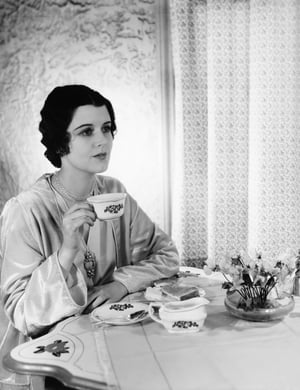
Knowing about this spectrum helps you find that “sweet spot” where your personal preference in taste, aroma, and appearance happens to fall. But to get to this starting point, you must first explore teas which is known as a “tea journey.”
Black tea is the most consumed type of true tea here in the U.S. The Tea Association of the U.S. shows 84% of tea consumed in the U.S. is black tea, while 15% accounts for green tea. While tea is enjoyed in its hot form in the U.K. and most of Europe, here in the U.S., about 80% of tea is consumed as iced tea.
There are two doors to the tea-drinking world. One door opens to true teas, which come from the tea plant (Camellia sinensis.) True teas consist of black, green, oolong, yellow and white teas. The other door opens to tisanes (herbal teas) which are teas made from parts of herbaceous plants, spices, fruits, or a combination of any of these three.
True Teas And Their “Hidden” Tastes
Now that we know black tea is the “celebrity” of true teas, all true teas have merit and are definitely worth exploring. If an unadulterated cup of tea just doesn’t appeal to you, that plain cup of tea may have hidden flavors that come to life with every sip.
There are hundreds of different true teas bursting with amazing flavors. Different origins, terroirs (climate, soil, etc.), flushes (harvests,) and processing methods produce these different tastes. Some teas go on to be infused with spices, herbs, other teas, or fruits to add layers of flavor and fantastic aromas.
Tisanes (Herbal Teas)
Tisanes take tea drinking to another level. These teas are caffeine-free (unless blended with a true tea) and are enjoyed by many as a lovely tasting beverage or to help with certain ailments.
Starting Your Tea Exploration
We are confident that after trying a few of the 25 best teas for non-tea drinkers, you will get hooked! Trying tea is like peeling an onion. There is layer after layer of flavor, nuances, and hidden explosions of attributes that make us fall in love with one or many teas. Who knows, eventually, we may find ourselves who once mocked those “bougie tea drinkers” now a part of that crowd.
Beginning a tea journey is a fun, high-rewarding, and enriching personal experience that we highly recommend. Of course, there’s a bit of work to be done on your part with planning your chartered course of exploration. You must ready yourself for the journey of a lifetime with the proper teaware. Tea deserves to be savored in a teacup rather than a paper cup.
A tea journey must start somewhere, so find a tea that has the flavors you like first and work your way from there. Familiarize yourself with the tea flavor/aroma wheel, which will be a compass in guiding you on your journey. Absorb as much information about different teas as you can. This information will “paint the picture,” so to speak, by transporting you to the origin of a tea.
There’s an element of excitement when you know that the tea you ordered was grown on the side of a mountain that reached up into the clouds somewhere near Tibet. Your anticipation of trying the tea as you await its arrival is exhilarating.
Share A Tea Journey With Friends
Just as a book club, gather a group of friends to take a tea journey with you. Keeping journals of the tea, its taste profile, comments, etc., is discussed, as is the tea’s origin. Everyone can chart a course through a country or along the Silk Road (tea trade route.) Just beware that this group activity is highly addictive because of the fun, camaraderie, and a sense of adventure. Best of all, you never have to leave home to take this trip of a lifetime!
Your Cup Of Tea Awaits
Now you see how trying one cup of tea as a non-tea drinker evolves into something wonderful and exciting? Perhaps there’s more to tea than we know, and the magic takes place with the conversion of a non-tea drinker to an avid tea drinker. All it took was one sip from one of the best teas for non-tea drinkers!
